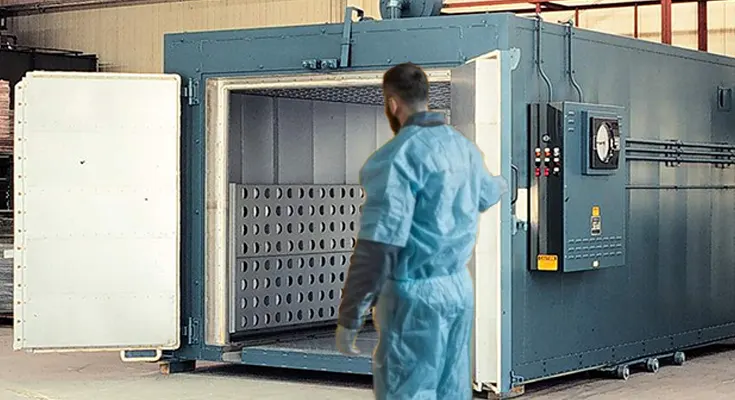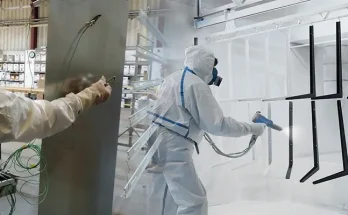A powder coating oven does more than just heat a surface—it ensures the durability and consistency of the final product. But what happens when the oven isn’t up to the task? Using an underpowered powder coating oven can create more problems than it solves, leading to unexpected setbacks and wasted resources.
Uneven Curing Leading to Weak and Flaky Coatings
An underpowered powder coating oven often struggles to maintain consistent heat levels, and uneven curing becomes one of the first noticeable issues. Powder coatings require precise temperatures to melt, flow, and bond properly with the surface. When parts of the oven are too cool, the coating doesn’t cure evenly, leaving some areas weaker and prone to flaking or chipping.
The inconsistency in curing doesn’t just look bad—it affects the integrity of the finish. Weak spots in the coating can expose the underlying material to corrosion and wear over time, negating the durability advantage powder coating is known for. Ensuring your powder coating oven can achieve uniform heating is critical to delivering a finish that lasts and protects the substrate as intended.
Extended Heating Times Delaying Production Schedules
Powder coating ovens that lack sufficient power often take much longer to reach the required temperatures. This delay extends the entire curing process, eating into production schedules and reducing overall efficiency. For operations relying on tight timelines, these delays can lead to missed deadlines and unhappy clients.
Beyond the direct time loss, extended heating times also mean higher energy usage. The oven’s heating elements work harder and longer, consuming more electricity and driving up operational costs. Investing in a properly powered oven not only streamlines the curing process but also helps maintain predictable schedules and minimizes wasted energy.
Inconsistent Surface Finishes Reducing Product Quality
The hallmark of a professional powder coating finish is its smooth, even appearance. An underpowered oven struggles to provide the consistent heat needed to achieve this, leading to surface imperfections like rough textures, uneven gloss, or patchy areas. These inconsistencies can hurt the perceived quality of your product, leaving customers questioning its value.
Inconsistent finishes aren’t just an aesthetic problem—they can also signal deeper issues with adhesion and durability. A powder coating oven that doesn’t maintain the right temperature throughout the curing process risks producing coatings that fail under real-world conditions. Choosing the right oven power ensures your products leave the shop with a flawless finish every time.
Increased Energy Consumption Due to Inefficient Heat Output
Ironically, underpowered powder coating ovens often use more energy than their well-matched counterparts. Because the oven struggles to reach and maintain the necessary temperatures, it cycles its heating elements more frequently, drawing excess power in the process. This inefficiency increases utility bills and reduces overall operational profitability.
Additionally, inefficient heat output can strain other parts of the oven, leading to premature wear and tear. An oven working overtime to compensate for its lack of power will likely require more frequent repairs and maintenance, further driving up costs. By selecting a powder coating oven with adequate power, operators can avoid these hidden expenses and enjoy better energy efficiency.
Higher Risk of Rework from Poor Adhesion or Defects
When a powder coating oven doesn’t provide consistent heat, the coating may not adhere properly to the surface. Poor adhesion is a common issue in underpowered ovens, resulting in finishes that peel, crack, or bubble. These defects force operators to rework parts, wasting time, materials, and energy.
Reworking parts not only disrupts production but also risks further damage to the substrate. The additional handling and processing can reduce the overall quality of the product. A powder coating oven that provides reliable and even heating minimizes the need for rework, ensuring parts are cured correctly the first time and meet quality standards.
Inability to Achieve Required Temperatures for Thick Materials
Thicker materials require higher curing temperatures and longer heat exposure to ensure the coating bonds fully to the substrate. An underpowered powder coating oven may not be capable of reaching or sustaining these higher temperatures, leaving thick parts improperly cured. This compromises the durability and performance of the coating, especially for heavy-duty applications.
When working with thicker materials, the heat must penetrate evenly to ensure the coating is cured throughout the entire surface. An underpowered oven simply cannot deliver this level of performance, leading to incomplete or defective finishes. A properly powered powder coating oven is essential for tackling larger, more complex jobs with confidence.
Accelerated Wear and Tear on the Oven from Overcompensation
An underpowered powder coating oven often operates at its limits, straining components like heating elements, fans, and insulation. This overcompensation accelerates wear and tear, shortening the lifespan of the oven and increasing maintenance needs. Operators may find themselves frequently replacing parts or dealing with unexpected downtime.
Over time, this added stress can lead to complete equipment failure, forcing costly repairs or replacements. Investing in a powder coating oven with the right power capacity ensures not only consistent performance but also a longer operational lifespan. Properly powered ovens handle the demands of daily use without unnecessary strain, saving time and money in the long run.





